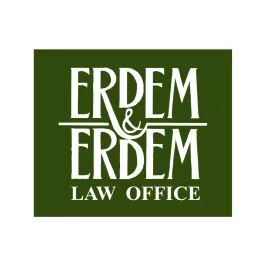Introduction
The Turkish Commercial Code No. 61021 ("TCC") bears many novelties regarding limited liability companies. In addition to new mechanisms regulated therein, the TCC introduces material revisions to concepts that have already been foreseen under the former abrogated Turkish Commercial Code No. 67622 ("fTCC"). One of these revisions concerns the termination of a limited liability company by just cause.
The provisions governing termination of a joint stock company by just cause3, which has been regulated for the first time under the TCC, and the termination of a limited liability company by just cause are materially similar. Notwithstanding, while the right to file a lawsuit for termination by just cause is granted only to the minority shareholders in a joint stock company, any shareholder of a limited liability company may exercise this right. Termination for just cause, which was already regulated under the fTCC, is supplemented and should be evaluated together with the exit rights of a shareholder in a limited liability company. Therefore, the termination of a limited liability company by just cause necessitates specific review and attention.
This Newsletter article will evaluate the termination of a limited liability company by just cause, bearing in mind both the termination by just cause under the fTCC and the novelties introduced by the TCC.
Termination by Just Cause under the fTCC and the TCC
fTCC Provisions
Art. 549 fTCC foresaw causes for termination of limited liability companies. One of the causes for termination is a court order for termination upon request of one of its shareholders in the presence of just causes.
Bearing in mind the exit rights regulated under Art. 551 fTCC, if there is just cause, a shareholder of a limited liability company had the right to request either the exercise of their right to exit the company4, or the termination of the company by just cause.
Material Novelty Introduced under the TCC
The TCC regulates termination of a limited liability company by just cause in Art. 636. Similar to the provisions of Art. 549 fTCC, the TCC grants every shareholder in a limited liability company the right to file a lawsuit for the termination of that company in the presence of just causes.
Notwithstanding, Art. 636/3 introduces a material novelty: the judge of the court, before which the termination lawsuit is filed, may rule for the squeeze out of the claimant shareholder or for another solution which is acceptable and suitable for the specificities of the present case.
Had the fTCC included such a provision, it could have prevented the prevailing practice of ordering the termination of the company, which was mandatory for limited liability companies with two shareholders, where exit and squeeze-out was not possible. The judge could have been empowered to rule for a solution other than termination.
For these reasons, Art. 636/3 TCC introduces a constructive provision that serves to promote the continuity of a company.
Specificities of the Lawsuit for Termination by Just Cause
Parties to the Lawsuit, Competent Jurisdiction
Any shareholder of a limited liability company may file a lawsuit for its termination by just cause.
While this right is granted as a minority right in joint stock companies, it is remarkable that any limited liability shareholder may file this termination lawsuit. Nevertheless, bearing in mind the exit and squeeze out rights granted under the fTCC and preserved under the TCC, the right to file a lawsuit for termination by just cause must be assessed together with the exit rights of the shareholder. Therefore, it is appropriate for this right to be granted to any limited liability company shareholder.
The lawsuit is filed against the company.
As is the case for the lawsuit for termination of a joint stock company by just cause, the competent jurisdiction in a lawsuit of this type is the commercial court of first instance where the headquarters of the limited liability company is located.
Just Cause
Neither the fTCC nor the TCC clarifies the scope and content of a just cause while regulating the termination of a company by just cause.
The legislative justification of Art. 636 TCC makes reference to Art. 531 governing the termination of a joint stock company by just cause. The legislative justification reaffirms that the code does not define what a just cause is, that jurisprudence and academic opinions shall define its scope. The justification provides for certain examples accepted by Swiss scholars. These include the repeated illegal convocation of the general assembly, constant violation of minority and individual rights, especially that of the right to information and inspection, continuous loss of the company and a regular decrease of distributed dividends.
The just causes accepted among scholars and jurisprudence during the period when the fTCC was in force may be used as a reference for defining just cause under the TCC. As emphasized by scholars, Art. 161 and Art. 187 fTCC regarding just causes in collective companies may shed light on the interpretation of just cause during the fTCC period. For instance, Art. 187 fTCC states that betrayal by a shareholder of the company in the management of the company and its accounts, non-fulfillment of his/her primary duties, misuse of the company name and property for his/her personal benefits, or his/her loss of ability or capacity to realize company actions due to illness or another cause, are just causes.
Numerous Court of Appeals rulings under the fTCC and TCC also shed light on various reasons which cause the continuity of the partnership or shareholding relationship to become unbearable. The misuse of the majority right, the non-operability of company bodies, material conflicts or hostilities among shareholders and the filing of lawsuits, criminal accusations and even physical confrontations, disruption of trust, unjustified benefits obtained for or by certain shareholders, violation of economic rights, such as the decrease or lack of dividend distribution, constant loss declared by the company and the impossibility for the company to realize its objective, the violation of a shareholders' right to information and inspection and mismanagement of the company are certain examples seen in jurisprudence.
Based on the above examples, just cause may be defined as a legal event which renders the continuity of partnership relations based on the good faith impossible.
In order for the ruling for the termination of a limited liability company, the elements that ensure continuity of the company should no longer be present. Termination should be the case only if the causes which the claimant shareholder alleges prevail over the benefits of other persons in the continuity of the company; unless the just cause is considered material to this extent, the court should not rule for termination of a company.
The requirement for a just cause to be material to the extent explained above becomes even more important bearing in mind the possibility Art. 636 TCC grants the court to rule for the squeeze out of the claimant shareholder or for another suitable solution instead of ruling for the termination of the company.
Court Rulings for Other Suitable Solutions
Pursuant to Art. 636 TCC, if a termination lawsuit is filed, the court may rule for the squeeze out of the claimant shareholder or for another suitable solution. This discretion granted to the judge is very important bearing in mind the main principle of ensuring a company's continuity and resorting to termination only when there is no other viable solution.
This provision is similar to Art. 531 TCC which, for the first time, regulates the termination of joint stock companies by just cause. The TCC accepts, by regulating alternative solutions to termination by just cause, that termination of a company is a very heavy consequence both for joint stock companies and limited liability companies. The termination of a company should only be a last resort.
Given the novelty introduced under Art. 636 TCC, the court does not have to rule for the termination of a limited liability company, even if it finds the reasons brought forward by the claimant shareholder justified. If the continuity of a company is more convenient from an economic and rational perspective, the court may squeeze out the claimant shareholder instead of terminating the company. This provision therefore accepts that the shareholder will incur no harm in being squeezed out of the company whose termination it is requesting. In both cases, the shareholder will exercise their shareholding rights and their shareholding shall cease.
In the event a lawsuit for termination by just cause is filed, the court is not limited with the option to squeeze out the claimant shareholder, and may rule for other suitable solutions. Notwithstanding, the TCC does not state what those solutions may comprise. Art. 636 TCC grants the judge broad discretion and the judge shall evaluate the conflict presented before the court.
It is disputed among scholars whether the judge should obtain the consent of the claimant shareholder and other shareholders when ruling for other convenient and acceptable solutions, while assessing the acceptability of this solution. The solutions which the judge shall apply may affect all shareholders. On the other hand, the judge's duty is to protect the company's interests, ensure its continuity and arrive at a solution rather than obtain a consensus.
Scholars state that possible solutions which a court may order may include distribution of dividends, spin-off of a company and granting shares to the claimant shareholder in the company to be newly formed as a result of the spin-off and appointment of the claimant shareholder(s) as manager at the company.
Conclusion
The TCC preserves the lawsuit for the termination of a limited liability company by just cause regulated under the fTCC. However, by regulating the possibility for the court to rule for the squeeze out of the claimant shareholder or for another solution which is acceptable and suitable for the specificities of the present case is a material innovation.
Provisions governing the termination of a limited liability company and that of a joint stock company are similar to one another. Notwithstanding, unlike in a joint stock company, any shareholder may file this lawsuit in a limited liability company, regardless of whether the shareholder constitutes a minority or not.
The code does not specify what the just causes for the termination of either a joint stock company or a limited liability company are. This will be clarified through jurisprudence and scholars' opinions. The fTCC provisions, scholars' opinions and previous Court of Appeals rulings may be consulted to shed light when defining the scope of just cause.
Footnotes
1. Entered into force through publication in the Official Gazette dated 14 February 2011 and no. 27846 on 1 July 2012.
2. The fTCC was abrogated by the TCC on 1 July 2012.
3. The termination of joint stock companies by just cause is assessed in a Newsletter article of February 2014. Please see Ercument Erdem, Termination of a Joint Stock Company by Just Cause http://www.erdem-erdem.av.tr/en/articles/termination-of-a-joint-stock-company-by-just-cause/ (accessed on 8 October 2014).
4. Please see Ercument Erdem, Withdrawal and Expulsion from Limited Liability Companies ("LLC") Incorporated by Two Shareholders (Newsletter Article of July 2014) http://www.erdem-erdem.av.tr/en/articles/withdrawal-and-expulsion-from-limited-liability-companies-llc-incorporated-by-two-shareholders/ (accessed on 8 October 2014) for squeeze out (expulsion) and exit in limited liability companies with two shareholders under the fTCC and the TCC.
The content of this article is intended to provide a general guide to the subject matter. Specialist advice should be sought about your specific circumstances.

